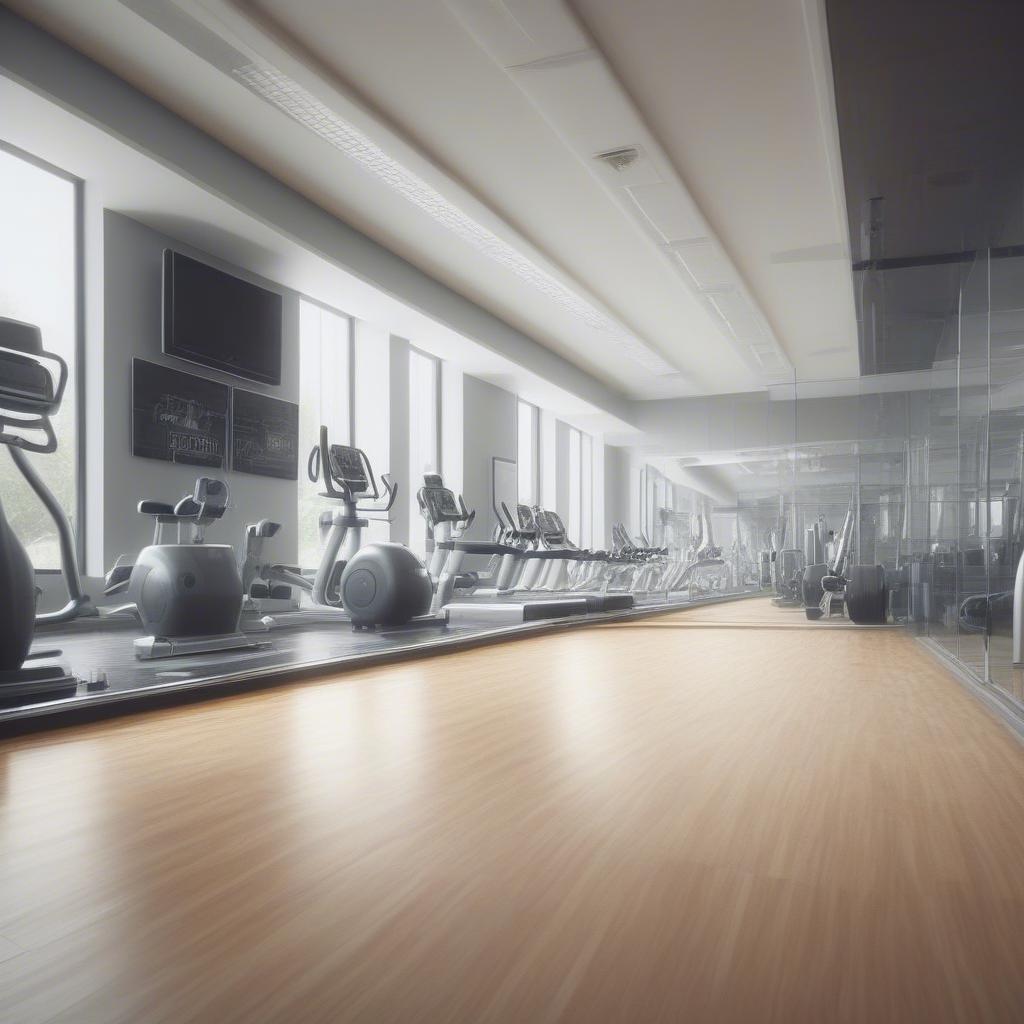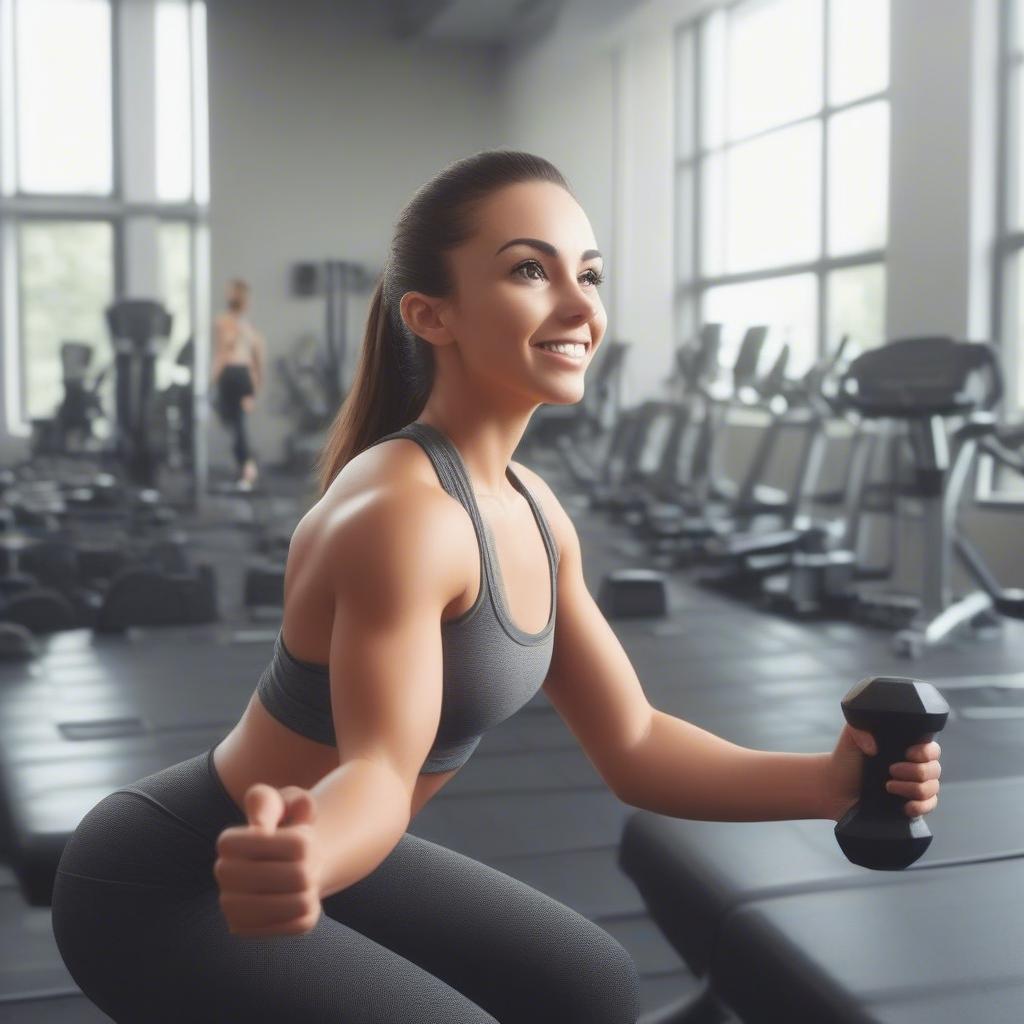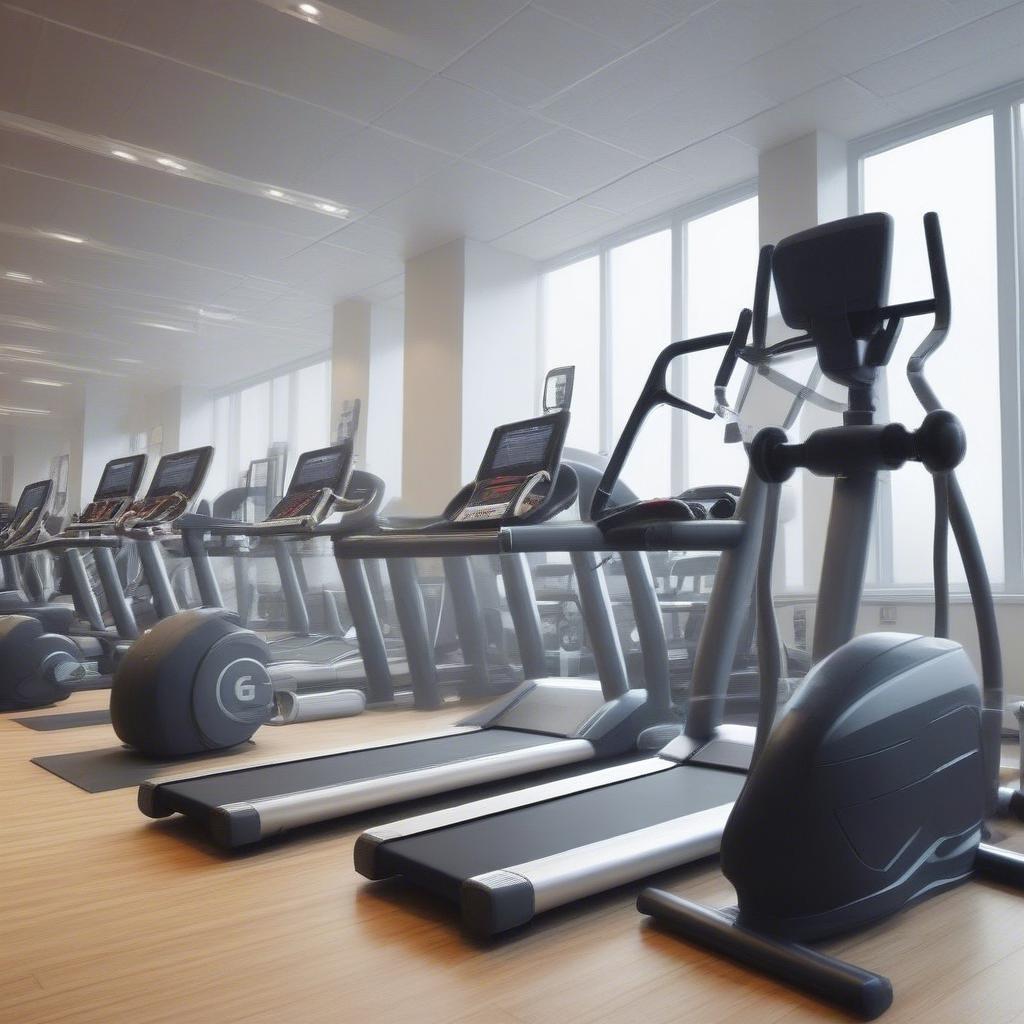
Maintaining a clean and hygienic gym environment isn’t just about aesthetics; it’s a fundamental pillar for the health, safety, and overall experience of every member. It’s about fostering a space where individuals feel motivated and secure to pursue their fitness goals. In this article, we’ll explore why gym cleanliness, fitness hygiene, and sanitary gym practices are crucial and how both gym owners and members can actively contribute to a healthier workout space.
Why Gym Cleanliness Matters: More Than Just Appearances
Gyms, by their very nature, are breeding grounds for germs and bacteria. Sweaty bodies, shared equipment, and close proximity create an environment where microbes thrive. Neglecting gym cleanliness can lead to a host of problems, impacting both individual well-being and the gym’s reputation.
The Health Risks of a Dirty Gym
A lack of proper fitness hygiene in a gym can contribute to several health issues:
- Skin Infections: Conditions like ringworm, athlete’s foot, and staph infections can easily spread through contaminated surfaces. Think of mats, benches, and even shower floors.
- Respiratory Infections: Flu, colds, and other respiratory illnesses are readily transmitted through airborne droplets and contaminated hands touching equipment.
- Eye Infections: Conjunctivitis (pink eye) can spread quickly through shared towels and face touching after equipment use.
- Weakened Immune Systems: Repeated exposure to germs can wear down your immune system, making you more susceptible to illness.
These aren’t just minor inconveniences; they can sideline members for days or even weeks, disrupting their fitness routines and impacting their overall health.
The Impact on Member Experience and Retention
Beyond the health concerns, a dirty gym sends a negative message to its members. It can:
- Reduce Motivation: A grimy, smelly environment is hardly inspiring. It can make members feel uncomfortable and less inclined to work out.
- Damage Reputation: Negative word-of-mouth and online reviews about cleanliness can severely harm a gym’s reputation.
- Increase Member Turnover: Members are more likely to leave a gym they perceive as unclean, seeking out facilities that prioritize sanitary gym practices.
- Lower Morale: Staff morale can also be affected, as employees might feel embarrassed or demotivated working in a poorly maintained environment.
A clean gym, on the other hand, signals care and professionalism, creating a positive, welcoming atmosphere that attracts and retains members.
The Pillars of Effective Gym Hygiene: A Comprehensive Approach
Maintaining a spotless and germ-free gym requires a multifaceted approach. It’s not enough to simply wipe down equipment sporadically; it demands a comprehensive strategy incorporating various elements of fitness hygiene.
1. Regular and Thorough Equipment Cleaning
Equipment is the heart of any gym and often the main source of germ transfer. To ensure proper gym cleanliness:
- Daily Disinfection: All equipment, including weights, cardio machines, benches, and mats, should be disinfected at least once daily, preferably multiple times during peak hours.
- Use Appropriate Cleaning Agents: Choose disinfectant solutions that are effective against bacteria and viruses but also safe for gym equipment materials.
- Provide Cleaning Supplies: Make sure members have access to wipes and sprays to clean equipment before and after use.
- Deep Cleaning Schedules: Establish regular deep-cleaning schedules for all equipment. This may include dismantling and thoroughly cleaning hard-to-reach places.
Example:
- Daily: Wiping down all weight machines and cardio equipment with disinfectant wipes after each use during peak hours and a thorough cleaning at closing.
- Weekly: Deep cleaning of mats, benches, and smaller equipment like dumbbells, kettlebells, and yoga blocks.
- Monthly: Professional deep cleaning of the entire facility, including equipment and floors.
Template for Daily Cleaning Checklist:
| Area | Item | Frequency | Procedure |
|---|---|---|---|
| Cardio Area | Treadmills | After Use | Wipe down handles, console, and frame. |
| Cardio Area | Ellipticals | After Use | Wipe down handles and console. |
| Cardio Area | Stationary Bikes | After Use | Wipe down handles, seat, and console. |
| Weights Area | Free weights | After Use | Disinfect all surfaces of each weight. |
| Weights Area | Weight Machines | After Use | Wipe down seats, handles, and touch points. |
| Mat Area | Exercise Mats | After Use | Disinfect top and bottom of the mat. |
| General | All Touch Points (door handles) | Hourly | Wipe down with disinfectant. |
2. Maintaining Immaculate Locker Rooms and Showers
Locker rooms and showers are prime areas for bacterial growth due to moisture and shared usage. Effective sanitary gym practices in these spaces are vital:
- Regular Cleaning: Clean showers, toilets, and locker room surfaces at least twice daily, with more frequent cleaning during busy hours.
- Disinfectant Use: Use disinfectant cleaners to eliminate germs and bacteria.
- Ventilation: Ensure adequate ventilation to prevent moisture buildup.
- Floor Mats: Provide floor mats that are regularly cleaned or replaced to prevent the spread of fungi and bacteria.
- Personal Hygiene Reminders: Place signs reminding members to practice good hygiene, such as wearing footwear in the shower.
Example:
- Multiple times daily: Cleaning of all showers, sinks, toilets, and floors. Focus on removing visible dirt, soap scum, and hair.
- Weekly: Deep clean all locker areas, including lockers themselves, benches, and other furniture.
- Monthly: Professional cleaning and disinfection of all locker rooms and showers.
Template for Locker Room Cleaning Checklist:
| Area | Item | Frequency | Procedure |
|---|---|---|---|
| Showers | Walls & Floors | Twice Daily | Clean with disinfectant solution, paying attention to corners and grout. |
| Showers | Shower Heads | Weekly | Clean with disinfectant and descale if necessary. |
| Showers | Drains | Daily | Remove hair and debris to prevent clogs and bacterial buildup. |
| Toilets | All Surfaces | Twice Daily | Clean and disinfect toilets, seats, and surrounding areas. |
| Sinks | All Surfaces | Twice Daily | Clean and disinfect sinks, faucets, and surrounding counters. |
| Lockers | Interior & Exterior | Weekly | Clean inside and outside of lockers using disinfectant. |
| Floors | General | Twice Daily | Sweep, mop, and disinfect all locker room floors. |
3. Emphasizing Member Responsibility
While gym owners and staff play a crucial role, members also have a responsibility to maintain fitness hygiene. Gyms should actively promote the following practices:
- Towel Usage: Encourage members to always use a towel to create a barrier between their skin and the equipment.
- Equipment Cleaning: Remind members to clean equipment before and after each use with provided supplies.
- Hand Hygiene: Encourage frequent hand washing with soap and water or using hand sanitizer.
- Personal Belongings: Remind members to keep personal items (water bottles, phones) off the floor and away from equipment.
- Sickness: Urge members who are unwell to stay home to prevent the spread of germs.
Example:
- Clearly displayed signs around the gym outlining hygiene expectations.
- Providing complimentary hand sanitizer stations at strategic locations.
- Regular reminders via email or social media about the importance of gym etiquette.
4. Proper Waste Management
Implementing sanitary gym practices includes managing waste effectively. This helps to prevent the accumulation of germs and maintain a clean environment:
- Adequate Waste Bins: Place enough bins in key areas, especially near equipment and locker rooms.
- Lidded Bins: Use lidded bins to prevent odors and limit the spread of airborne germs.
- Regular Emptying: Empty bins frequently, especially during peak hours, and disinfect them regularly.
- Proper Disposal: Follow proper disposal guidelines for cleaning supplies and waste.
Example:
- Strategically placed waste bins near all workout areas and changing facilities.
- Bins emptied at least twice daily and disinfected.
- Lidded bins for paper towels and other waste in key locations
5. Ventilation and Air Quality
Good ventilation is essential to preventing the buildup of moisture and airborne pathogens:
- Adequate Ventilation: Ensure the gym has a well-functioning ventilation system that circulates air effectively.
- Air Filters: Regularly clean or replace air filters to improve air quality.
- Air Purification: Consider using air purifiers, especially in enclosed spaces, to further reduce airborne germs.
Example:
- Regularly scheduled maintenance of ventilation system.
- Using air purifiers with HEPA filters to remove harmful airborne particles.
- Properly sized HVAC system for the capacity of the gym to ensure adequate ventilation.
Implementing Effective Cleaning and Hygiene Protocols: A Step-by-Step Guide
To implement effective gym cleanliness protocols, follow these steps:
- Assess: Evaluate current practices, identify weaknesses and areas for improvement.
- Develop: Create a comprehensive hygiene plan with specific protocols, responsibilities, and schedules.
- Educate: Train staff on the new protocols and ensure they understand their roles and responsibilities.
- Communicate: Inform members about the new hygiene standards and their expected behavior.
- Monitor: Continuously monitor adherence to the protocols and make adjustments as needed.
- Review: Regularly review and update hygiene protocols based on member feedback and new best practices.
Example:
- Conduct a thorough review of all current cleaning procedures.
- Develop a detailed cleaning checklist that includes frequency, responsibilities, and supplies for each area of the gym.
- Train all staff members on new cleaning standards and expected member behavior.
- Post signs and announcements throughout the gym, reminding members of their responsibilities.
- Assign a staff member to regularly monitor adherence to the hygiene protocol.
- Solicit member feedback about the cleaning and hygiene of the gym through surveys or feedback forms.
- Update the cleaning protocols based on the feedback and new best practices every six months.
The Benefits of a Clean and Hygienic Gym
The benefits of prioritizing gym cleanliness, fitness hygiene, and sanitary gym practices are far-reaching:
- Improved Member Health: Reducing the spread of infections leads to healthier members who can consistently pursue their fitness goals.
- Enhanced Member Experience: A clean and welcoming environment encourages members to use the facility more often and stay longer.
- Boosted Reputation: A well-maintained gym earns a strong reputation, attracting new members and retaining existing ones.
- Increased Member Loyalty: Members are more likely to remain loyal to a gym that clearly prioritizes their health and well-being.
- Improved Staff Morale: A clean and pleasant workspace can improve staff morale and productivity.
- Reduced Liability: By prioritizing hygiene, gyms can reduce the risk of liability related to health and safety issues.
Learn Business: Your Partner in Building a Successful and Hygienic Gym
At Learn Business, we understand the unique challenges that gym owners face. That’s why we offer comprehensive resources and support to help you build a successful and thriving business.
How Learn Business Supports Gyms
Learn Business provides a wide range of tools and guidance to help gyms enhance their operations, including:
- Business Templates: Access ready-to-use templates for creating cleaning schedules, checklists, and protocols tailored to your specific needs.
- Expert Guidance: Receive expert advice from experienced business professionals on best practices for gym management and hygiene.
- Operational Support: Learn strategies for streamlining your gym’s operations to improve efficiency and maintain high standards of cleanliness.
- Marketing Assistance: Get guidance on marketing your gym’s commitment to cleanliness and attracting members who prioritize health and hygiene.
- Community Support: Connect with a supportive community of gym owners and professionals to share ideas and best practices.
Example Templates and Resources:
- Gym Cleaning Checklist Template: A detailed, customizable template that covers all areas of your gym, from equipment to locker rooms.
- Hygiene Policy Template: A comprehensive policy template that outlines your gym’s hygiene expectations for both staff and members.
- Member Communication Templates: Ready-to-use email and social media templates for communicating hygiene practices to your members.
- Best Practice Guides: In-depth articles and guides covering all aspects of gym hygiene and sanitation.
- Consultation services: Direct support from experts who can answer your questions and guide you through the best practices.
By partnering with Learn Business, you can access the tools and expertise you need to create a thriving, healthy, and welcoming gym environment. Prioritizing gym cleanliness, fitness hygiene, and sanitary gym practices isn’t just a good idea; it’s an essential investment in the long-term success of your business. Remember, a clean gym is a successful gym! By understanding the "what", "why", and "how" of gym cleanliness, fitness hygiene, and sanitary gym practices, you can create an environment where members feel safe, comfortable, and motivated to achieve their fitness goals. Remember to also use tools like learn business to help you maintain your gym operations up to date and keep up with the best practices.



Leave a Reply